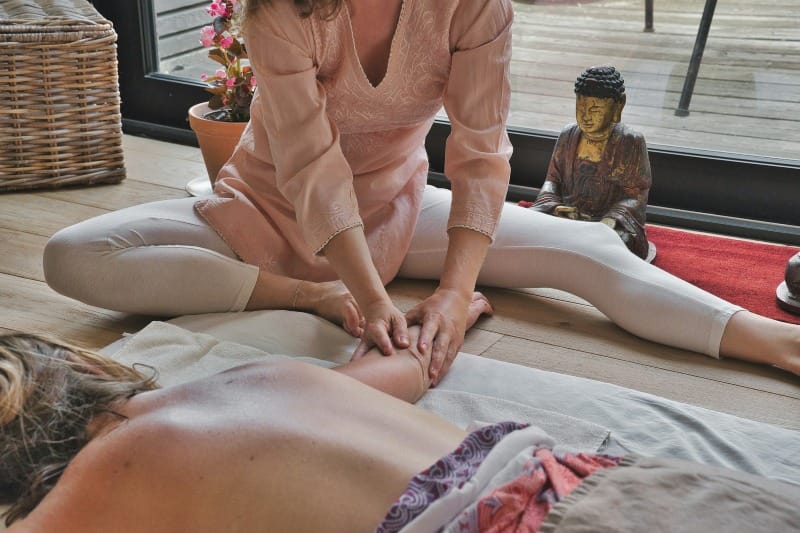The connection between our minds and bodies is more profound than we often realize. Emerging research continues to unveil the intricate ways our thoughts, emotions, and physical health intertwine. By tapping into this mind-body connection, we can unlock powerful healing potential and improve our overall well-being. This article explores various mind-body techniques and their benefits, offering practical ways to incorporate these practices into your daily life for better health.
Key takeaways:
• Mind-body practices can reduce stress, anxiety, and depression
• Regular practice may improve physical symptoms and boost immune function
• Techniques like meditation, yoga, and deep breathing are accessible and cost-effective
• Combining mind-body approaches with conventional medicine can enhance overall health outcomes
• Consistency is key to experiencing the full benefits of mind-body healing
Understanding the mind-body connection
The mind-body connection refers to the intricate relationship between our mental and physical states. Research has shown that our thoughts, emotions, and beliefs can significantly impact our physical health, and vice versa. This bidirectional relationship forms the foundation of mind-body medicine, which aims to harness the power of the mind to promote healing and overall well-being[1].
Dr. Herbert Benson, a pioneer in mind-body medicine, explains: "The mind and body are inseparable. The way we think and feel can powerfully affect our physical functioning, and our physical state can profoundly influence our mental and emotional well-being."
Benefits of mind-body healing techniques
Incorporating mind-body practices into your routine can yield numerous benefits for both mental and physical health:
- Stress reduction: Mind-body techniques like meditation and deep breathing activate the relaxation response, countering the harmful effects of chronic stress[2].
- Improved mood: Regular practice of mind-body techniques has been shown to reduce symptoms of anxiety and depression[3].
- Pain management: Techniques such as mindfulness and yoga can help alleviate chronic pain conditions by changing pain perception and reducing associated stress[4].
- Enhanced immune function: Some studies suggest that mind-body practices may boost immune system functioning, potentially improving overall health and disease resistance[5].
- Better sleep: Many mind-body techniques promote relaxation, which can lead to improved sleep quality and duration[6].
Popular mind-body healing techniques
Meditation
Meditation involves focusing the mind to achieve a state of calm and heightened awareness. Regular meditation practice has been linked to reduced stress, improved emotional regulation, and enhanced overall well-being[7].
To get started:
• Find a quiet, comfortable space
• Set aside 5-10 minutes daily
• Focus on your breath or a specific mantra
• Gently redirect your attention when your mind wanders
Yoga
Yoga combines physical postures, breathing exercises, and meditation to promote physical and mental well-being. Regular yoga practice can improve flexibility, strength, and balance while reducing stress and anxiety[8].
Tips for beginners:
• Start with beginner-friendly classes or online tutorials
• Focus on proper alignment and breathing
• Listen to your body and avoid pushing beyond your limits
Deep breathing exercises
Controlled breathing techniques can quickly activate the body's relaxation response, reducing stress and promoting a sense of calm[9].
Try this simple technique:
• Inhale deeply through your nose for a count of 4
• Hold your breath for a count of 7
• Exhale slowly through your mouth for a count of 8
• Repeat for 5-10 cycles
Guided imagery
This technique involves using your imagination to create calming mental images, promoting relaxation and reducing stress[10].
How to practice:
• Find a quiet, comfortable space
• Close your eyes and take a few deep breaths
• Visualize a peaceful scene in detail, engaging all your senses
• Spend 5-10 minutes immersed in this mental imagery
Progressive muscle relaxation
This technique involves systematically tensing and relaxing different muscle groups to promote physical and mental relaxation.
Basic steps:
• Lie down or sit comfortably
• Starting with your toes, tense the muscles for 5 seconds
• Release the tension and relax for 10 seconds
• Move up through each muscle group in your body
Integrating mind-body techniques into daily life
Consistency is key when it comes to reaping the benefits of mind-body healing techniques. Here are some tips for incorporating these practices into your daily routine:
• Start small: Begin with just 5-10 minutes of practice daily
• Set reminders: Use phone alerts or sticky notes to prompt regular practice
• Create a dedicated space: Designate a quiet area for your mind-body exercises
• Combine techniques: Mix and match different practices to find what works best for you
• Be patient: It may take time to notice significant benefits, so stick with it
Conclusion
Mind-body healing techniques offer a powerful, accessible way to improve both mental and physical health. By incorporating practices like meditation, yoga, and deep breathing into your daily routine, you can harness the innate healing potential of your mind-body connection. Remember, these techniques are meant to complement, not replace, conventional medical care. Always consult with your healthcare provider before making significant changes to your health regimen.
Ready to explore the world of mind-body healing? Start by choosing one technique from this article and committing to practice it for just 5 minutes a day. Your mind and body will thank you for it.
References:
[1] National Center for Complementary and Integrative Health. (2021). Mind and Body Practices.
[2] Benson, H., & Klipper, M. Z. (2000). The relaxation response. HarperCollins.
[3] Goyal, M., et al. (2014). Meditation programs for psychological stress and well-being: a systematic review and meta-analysis. JAMA Internal Medicine, 174(3), 357-368.
[4] Hilton, L., et al. (2017). Mindfulness meditation for chronic pain: systematic review and meta-analysis. Annals of Behavioral Medicine, 51(2), 199-213.
[5] Black, D. S., & Slavich, G. M. (2016). Mindfulness meditation and the immune system: a systematic review of randomized controlled trials. Annals of the New York Academy of Sciences, 1373(1), 13-24.
[6] Rusch, H. L., et al. (2019). The effect of mindfulness meditation on sleep quality: a systematic review and meta-analysis of randomized controlled trials. Annals of the New York Academy of Sciences, 1445(1), 5-16.
[7] Khoury, B., et al. (2015). Mindfulness-based stress reduction for healthy individuals: A meta-analysis. Journal of Psychosomatic Research, 78(6), 519-528.
[8] Cramer, H., et al. (2013). Yoga for depression: a systematic review and meta-analysis. Depression and Anxiety, 30(11), 1068-1083.
[9] Zaccaro, A., et al. (2018). How breath-control can change your life: a systematic review on psycho-physiological correlates of slow breathing. Frontiers in Human Neuroscience, 12, 353.
[10] Giacobbi, P. R., et al. (2015). Guided imagery for arthritis and other rheumatic diseases: a systematic review of randomized controlled trials. Pain Management Nursing, 16(5), 792-803.
Kwekkeboom, K. L., & Gretarsdottir, E. (2006). Systematic review of relaxation interventions for pain. Journal of Nursing Scholarship, 38(3), 269-277.














Member discussion